Start a new game in the new year and make great efforts to start a new journey! Jiangsu medical staff draw "battle map" of health defense line
"Spring is the first year, and the new year is new." The medical staff who have just adhered to the "medical line" of the Spring Festival are engaged in the busyness of the new year. In the new year, how to grasp the start, grasp the start, show a new atmosphere, take on new actions, and jointly protect the health of the people?
This issue of "Health Weekly" specially launched the "New Year Special Edition". Focusing on nine key words, reporters visited key departments of major hospitals in Jiangsu in several ways to see what "battle maps" were drawn by "department heads" in their respective medical fields in the new year.
Keywords: innovation leads
Shi Haibin, Director of Interventional Radiology Department of jiangsu province hospital (First Affiliated Hospital of Nanjing Medical University, Jiangsu Maternal and Child Health Hospital)
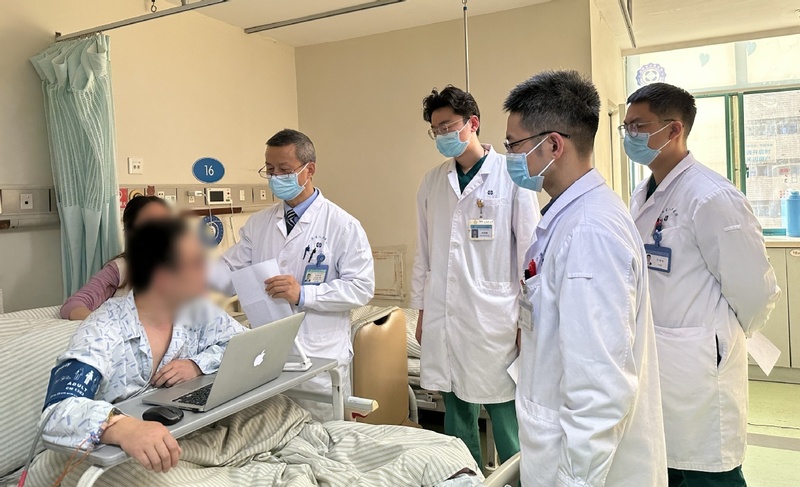
2moon17On the eighth day of the Lunar New Year, the last day of the Spring Festival holiday, the "First Meeting of the New Year" of jiangsu province hospital Intervention Department was held in advance. Shi Haibin, director of the department, organized a general practitioner and spent three and a half hours summarizing and analyzing the treatment of typical cases in the past, and made reports and exchanges focusing on clinical services, scientific research innovation and personnel training in the new year.
The New Year’s busyness began on New Year’s Eve and lasted until the eighth day of junior high school. The interventional radiology department performed emergency interventional surgery.34Taiwan, including emergency embolectomy for stroke.nineCases, ruptured intracranial aneurysm.eightExamples, other kinds of bleeding.11Example. For jiangsu province hospital, during long holidays, there are always more emergency interventions, usually twice as many as usual. On the second day of the busiest New Year’s Day, from 9: 00 a.m. to 4: 30 a.m. the interventional department did it continuously.eightTaiwan emergency surgery.
At the beginning of the fifth year, the outpatient service of the hospital was opened, and the patients who agreed to have elective surgery were admitted to the hospital one after another. The number of patients in the interventional ward was increasing. The ward was full at the beginning of the eighth year, and the elective interventional surgery was arranged the next day (the first day of normal work).23Taiwan, full, includingsixTaiwan general anesthesia operation.
The treatment of emergency patients is an important part of interventional radiology. Shi Haibin introduced that the interventional treatment mainly includes the following categories: first, the first aid of cerebrovascular diseases, including the interventional treatment of patients with acute cerebral infarction and patients with ruptured intracranial aneurysms; The second is the first aid for patients with various bleeding, including interventional hemostasis for various bleeding such as obstetrics and gynecology, digestion, respiratory tract and trauma; The third is the emergency treatment of ureteral obstruction, biliary obstruction and other situations. The patient’s condition is varied, whether it is "sparse" or "blocked", and the corresponding treatment should be determined according to the condition, which also requires multidisciplinary joint treatment.
The patient’s condition is a "warning", and there must be no delay. Since the Year of the Loong, what impressed Professor Shi Haibin the most is a34A-year-old male was diagnosed as "acute occlusion of carotid artery" after massage, and was referred from other places on New Year’s Eve.twenty past nine p.m.Arrive at the emergency department of jiangsu province hospital and enter the green channel of stroke. After judging the condition,CTEvaluation, family conversation,oneInterventional surgery will be started after 10 hours. After the occlusion of cerebrovascular blood flow was opened, the patient’s speech and limb function immediately returned to normal. For such a young patient, to save a patient is to save a family.
"The construction of the green channel for stroke emergency has gradually spread throughout the country. For medical institutions, it is necessary not only to have excellent technology, but also to have efficient linkage between different disciplines, and the timeliness of emergency treatment is very high. " Shi Haibin told reporters that the green channel for stroke first aid in jiangsu province hospital has been established nearly.10In, multidisciplinary teams, including emergency department, radiology department, interventional department and neurosurgery department, cooperated closely, and the hardware and software of the hospital were upgraded synchronously, ensuring the rapid, efficient and seamless docking of all treatment links and saving every second for patients.
In the new year, the focus of the department is far more than "speeding up". In the interventional department on the plateau of jiangsu province hospital, there should be a leading exploration in the aspects of treatment mode and scientific research innovation. Taking stroke as an example, jiangsu province hospital has integrated the high-quality medical resources related to cerebrovascular diseases in the whole hospital, and established a relatively independent discipline system including pre-hospital screening, acute treatment, early rehabilitation, secondary prevention, post-hospital management and follow-up education. Emergency admission is not the starting point of treatment, and the success of surgery is not the end point of treatment. Based on information technologies such as Internet, Internet of Things and artificial intelligence, life-cycle services for patients from prevention to rehabilitation have been developed, and a relatively complete regional stroke treatment system has also been established. In the new year, jiangsu province hospital Interventional Radiology Department will continue to improve the medical quality, constantly explore the upgrading of service mode, popularize key appropriate technologies, expand the radiation to primary hospitals, and benefit more people.
Keywords: overcoming difficulties
Shao Yongfeng, Director of Cardiovascular Surgery, jiangsu province hospital (First Affiliated Hospital of Nanjing Medical University, Jiangsu Maternal and Child Health Hospital)
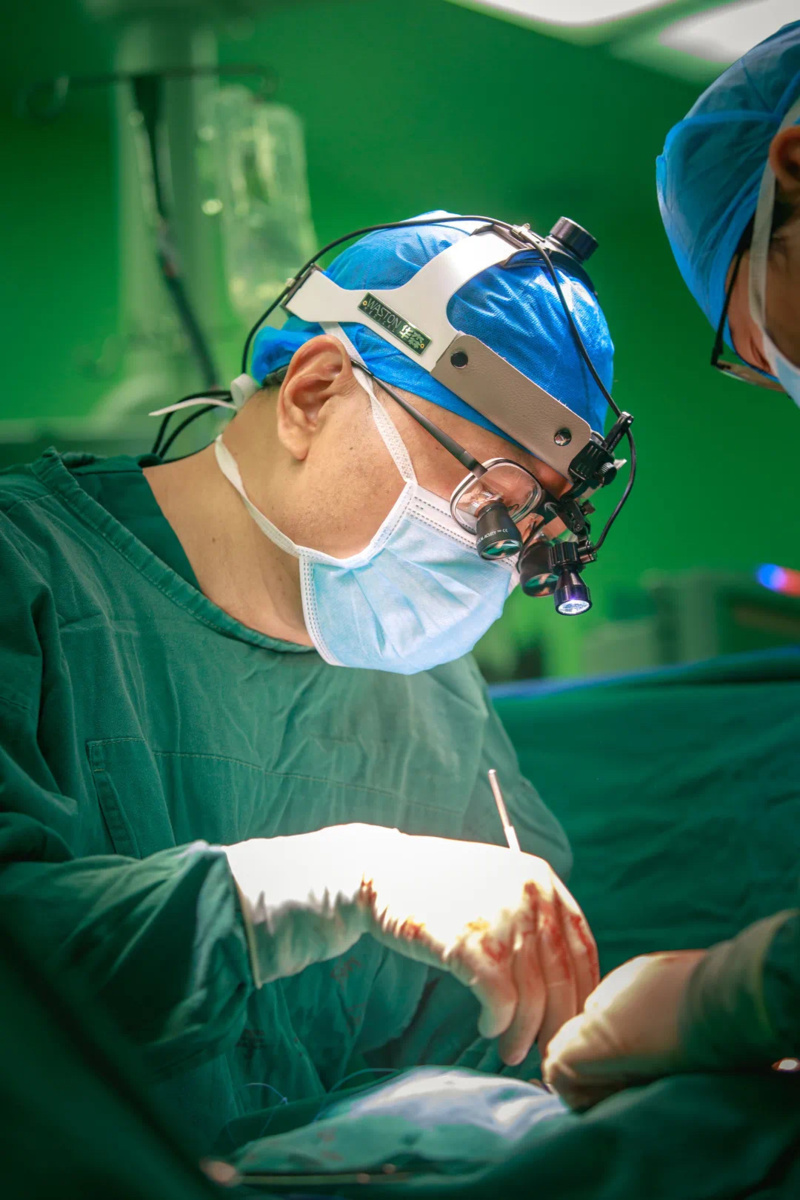
"There is a patient with atrial fibrillation who urgently needs me to consult. The patient is older and his condition is very complicated … "On the first day of work on February 18th, Shao Yongfeng set off non-stop after receiving a call for help from the lower hospital of the Medical Association.
For many medical staff, the 8-day long holiday during the Spring Festival is both a holiday and an ordinary day.
As the main person in charge of the Department of Cardiovascular Surgery of the Provincial People’s Hospital, Shao Yongfeng and his team didn’t rest for almost a day this Spring Festival. They spent it either in the operating room or in the ward. On the Lunar New Year’s Eve, two patients with aortic dissection were sent from other places, and another case came on the New Year’s Day.Spring FestivalTwo cases came in the third grade … During the Spring Festival, he and his team colleagues performed 10 cases of aortic dissection.
Shao Yongfeng said that the most nervous thing was the operation on New Year’s Eve. "The patient is a 60-year-old female patient who was rushed to the emergency room by her family. It was about 10 o’clock in the evening when she was delivered, and we immediately opened up a green channel. When the chest cavity was opened on the operating table, the hemangioma burst and a lot of blood rushed out … "Shao Yongfeng and his colleagues were busy for 7 hours before it ended.operation. Fortunately, the patient was saved.
"There is also the fifth day of the Lunar New Year. Everyone has done three operations in a row, and it has been busy from morning until 4 am on the sixth day of the year." He said that when everyone walked out of the operating room, it had already ushered in the dawn of the next day.
"Aortic dissection is a very dangerous disease, known as the’ untimely bomb’ on blood vessels. Once the tumor ruptures, the patient’s life is in danger at any time, so surgery must be performed immediately." Shao Yongfeng said that if surgery is not performed within 48 hours, the mortality rate of patients will exceed 50%. Surgical treatment of aortic dissection is one of the most complicated and difficult operations in cardiac vascular surgery. However, this operation is already a "routine operation" for Shao Yongfeng and his team. This year they have set their sights on the more difficult and complicated field of minimally invasive cardiac surgery. Minimally invasive surgical treatment of solitary atrial fibrillation under thoracoscope is one of their main directions.
"As a common heart disease, atrial fibrillation has become an urgent problem to be solved in the process of population aging. Atrial fibrillation may induce stroke and cause heavy family and social burden." Shao Yongfeng said that traditional surgical ablation requires thoracotomy and cardiopulmonary bypass, which is traumatic and difficult for patients with isolated atrial fibrillation to accept. Minimally invasive surgical ablation of atrial fibrillation is a minimally invasive approach for the treatment of atrial fibrillation, which does not require thoracotomy and cardiopulmonary bypass, and has less trauma and low incidence of surgical complications, making it easy for patients with isolated atrial fibrillation to accept and recognize.
"Another thing that needs to be vigorously promoted this year is the treatment of end-stage heart failure with ventricular assist devices." Shao Yongfeng said that the incidence of end-stage heart failure is high, which is extremely fatal, and it is an important cause of cardiac death in heart patients. Most patients with end-stage heart failure can’t get good clinical efficacy by relying solely on drug treatment, and they need heart transplantation. However, due to limited donors, the number of patients who can receive transplantation is very limited. Therefore, the development and application of ventricular assist device is of great significance to maintain the cardiac function of patients. Shao Yongfeng said that in the new year, departments will continue to take patients as the center, give full play to the advantages of jiangsu province hospital’s platform, overcome difficulties, strive to improve the success rate of treatment of critically ill patients, solve the difficult problems of diagnosis and treatment of difficult patients, and enable more patients with cardiovascular diseases to receive timely and effective treatment.
Keywords: "top matching" of software and hardware
Cheng Rui, Director of Neonatal Medical Center of Nanjing Children’s Hospital
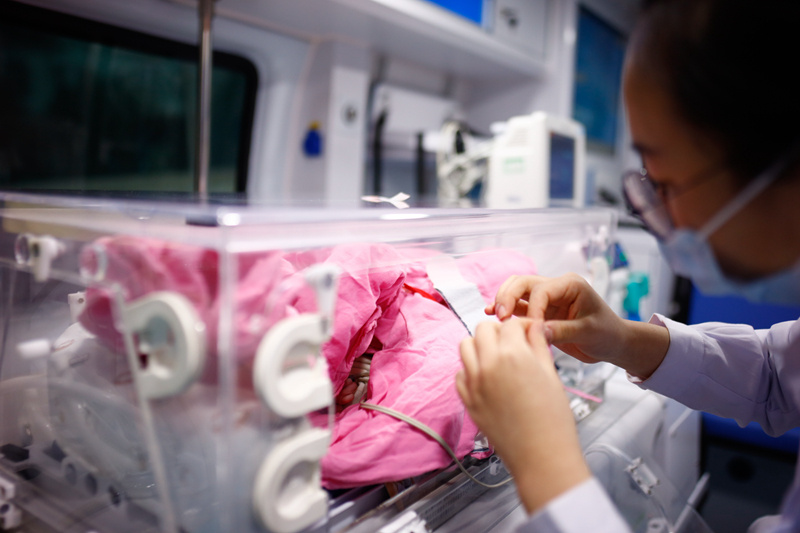
The child was given a chance to be treated by timely transportation, and the tender life had a "new life". In the new year, the transfer of the neonatal medical center of Nanjing Children’s Hospital has entered the "top-matching era";2A heavily armed ambulance is "mobile"NICU",carrying neonatal transfer incubator, ventilator, portable blood oxygen heart rate monitor, carbon monoxide inhaler, advanced infusion pump, negative pressure aspirator and other equipment,24Hours on standby, all year round, and the transshipment personnel are allNICUSenior neonatal specialist medical staff.
Just in the past Spring Festival,eightDuring the holiday, Nanjing Children’s Hospital had an emergency transfer from other places.30For example, many newborns are from outside the province. Reporter Cheng Rui, director of the medical center, whether on holidays or in peacetime, all the medical staff in the department have already reached a tacit understanding-close cooperation, filling positions at any time, and every minute counts.
Transfusion for rare blood group’s hemolytic disease started the "first battle" of the Year of the Loong’s life protection. Duoduo comes from Bengbu, Anhui Province. Just one day after his birth, he was diagnosed with rare blood group’s hemolytic disease, showing bilirubin encephalopathy, and needed urgent blood exchange treatment. But the local hospital does not have the conditions for identification and blood matching. Seeing a lot of heme falling all the way, the local hospital is late.sixDialed the transfer phone of the neonatal medical center of Nanjing Children’s Hospital.
"We just caught up with the peak of Spring Festival travel rush’s return journey, and the high-speed sections to and from are all building roads, which is very congested." Kan Qing, deputy director of the center, recalled that in order not to delay the illness, the medical staff began to rescue the children at the first moment. The neonatal medical center made preparations for the consultation early, and after arriving at Nanjing Children’s Hospital, all the work was in full swing.
But new problems soon emerged. "Children need to use their mother’s blood to exchange blood, but many mothers are far away in the countryside, and it is too late to get here." Kan Qing introduced that Duoduo’s mother’s blood type is rarer than panda’s blood, so the department planned two plans. On the one hand, the child’s grandfather sent his mother’s blood from the local area; At the same time, the hospital used the existing blood in the blood station to "blindly match" one bag after another. Fortunately, "blind matching" succeeded! Early the next daynineAt 8: 00, Duoduo completed the whole body exchange of blood.
Seeing a lot of jaundice quickly relieved and hemoglobin significantly increased, everyone breathed a sigh of relief. In the shortest time, the baby arrived at the hospital safely, and then the blood exchange was successful, which took less than.15An hour. Behind this is the close cooperation of the medical department and the full cooperation of first-aid transshipment, which did not delay a minute, allowing us to see a newborn being rescued again. Cheng Rui said with emotion, "Every medical staff has experienced countless times of first aid and severe tempering, and the departments have already formed a working style of teamwork."
Founded in1953The Neonatal Medical Center of Nanjing Children’s Hospital was the first neonatal intensive care unit in Jiangsu Province (NICU) of the clinic.2004In 2000, the center established the first-aid system for newborn transport.2012Approved to become the medical quality control center of neonatal department in Jiangsu Province in,2021Approved by the national key clinical specialty construction unit in.
pass by70Over the years of development, the department has306NICUWard,307Full-term baby ward,308The family care ward has carried out comprehensive and systematic neonatal monitoring, diagnosis, treatment and rehabilitation follow-up from pre-hospital first aid and transportation of critically ill newborns, neonatal intensive care, critical care and comprehensive management of premature infants, as well as neonatal brain function monitoring, neonatal brain protection and early intervention.
“2024In 2000, the focus of our work was still on the treatment of neonatal critical illness, and transshipment was our biggest feature. "Cheng Rui introduced that first-aid transshipment is a race against time, going to Wan Li thousands of miles away, just to ensure the green passage of life. The transport team will standardize quality management and strictly control safety, and we will do our best to escort critically ill newborns in the whole province and surrounding provinces and cities.
Keywords: accurate service
Li Weiwen, Director of Obstetrics of Yancheng Maternal and Child Health Hospital
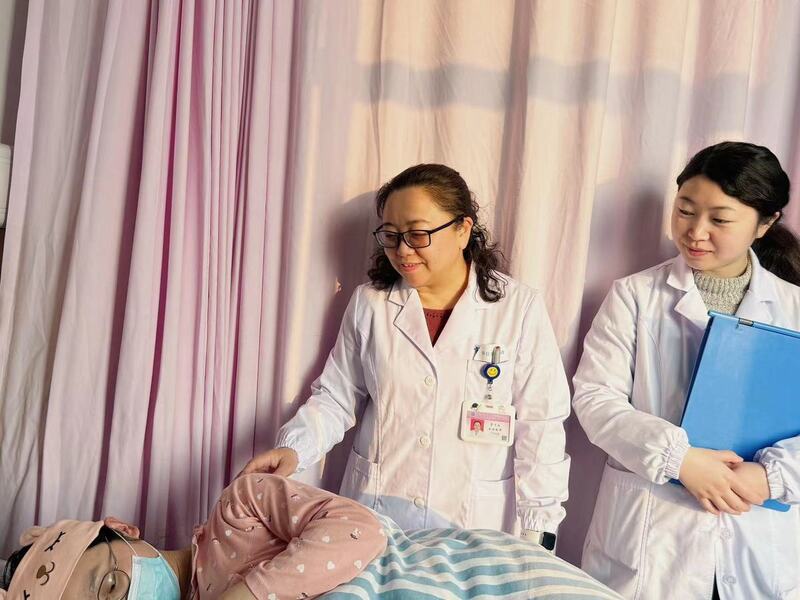
20242008, also known as the Year of Qinglong, not only carries rich historical significance such as "good luck and peace", but also places people’s expectations for new life and a beautiful vision for the future. In Yancheng Maternal and Child Health Hospital, obstetrics is open to expectant mothers all year round, welcoming the arrival of one new life day and night.
"Don’t be nervous, I’m not leaving, I’m here with you." Late at night on the second day of the Lunar New Year, the delivery room of Yancheng Maternal and Child Health Hospital was busy. Li Weiwen, director of obstetrics, stood next to a lying-in woman, guiding her breathing and exerting strength while comforting her.
It turns out that this second-born mother from Xiangshui County, Yancheng City has been afraid to give birth because of her scarred uterus and ovarian cysts. The examination at the hospital showed that the maternal conditions were good in all aspects. "Although we felt that there was no problem in giving birth naturally, the maternal was still very nervous and kept holding my hand." In order to give confidence to the parturient and monitor the unstable fetal heart at any time, Li Weiwen stayed in the delivery room for a whole night.
In the early morning, with a loud cry, asixThe boy with a heavy weight was born smoothly. And Li Weiwen is busy rushing to the next emergency caesarean section for twin women.
"This year is the Year of the Loong. At present, more than a dozen’ dragon babies’ are born every day, and obstetrics is too busy to touch the ground!" Li Wei Wen told reporters that everyone was busy and happy.
"Dragon babies" were born one after another, which could not be separated from the persistence of all medical staff in obstetrics. "During the holiday period, the more complicated patients and parturients in the following counties and districts will turn to our side, and we must stand on our posts." Li Weiwen admits that obstetric work is hard and tiring. "But hearing the crying of the babies and hearing the thanks of the mothers can make us feel very worthwhile. This job makes people feel very honored and fulfilled."
"Judging from the current situation of pregnant women building cards, this year is indeed a little more." Li Weiwen introduced. In order to meet the different needs of young families, the Obstetrics Department of Yancheng Maternal and Child Health Hospital took the lead in introducing some appropriate technologies and service models, such as doula accompanying delivery, free posture delivery, neonatal swimming touching, semi-lying breastfeeding, and intellectual nursing training, and formed a comprehensive health care network integrating delivery, delivery and extended service after discharge.
How to adapt to the needs of young parents and make the service more accurate is the direction that the department has been thinking and exploring. One of the practices in this field is the special delivery room and special obstetric clinic. In addition, it is also the goal of the hospital to build diagnosis and treatment centers for pregnancy complicated with diabetes, pregnancy complicated with hypertension and premature infants throughout the city to make medical management more centralized and precise.
"We must be the’ gatekeeper’ of the health of women and children in the city." Li Weiwen introduced that as the lead unit of Yancheng Maternal and Child College Alliance, the hospital joined Yancheng.11Maternal and child health centers (institutes) in 30 counties and districts regularly carry out physical examinations for women and children in their jurisdictions, and actively open up a green channel for two-way referral. "This year, we will continue to send young doctors out for further study, learn more advanced technologies and concepts, and provide better services for women and children in the city."
Keywords: combination of doctors and workers
Zhang Junjie, Vice President of Nanjing First Hospital and Chief Physician of Cardiovascular Department.
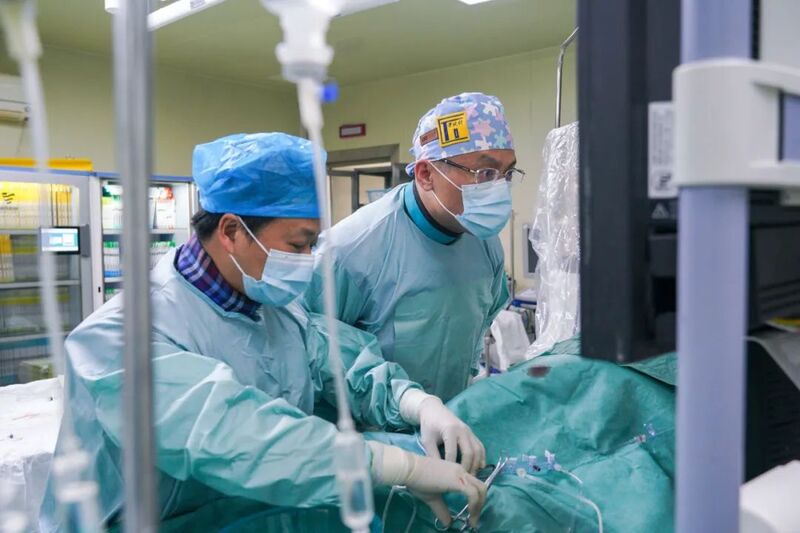
for90What’s the experience of an old man undergoing emergency heart surgery? Just in the past Spring Festival, Zhang Junjie and his team solved the problem of severe aortic stenosis in the heart of this very old man in an hour. At present, the old man turned the corner and was transferred to the general ward for rehabilitation.
This operation was also completed by the cardiovascular center of the hospital during the Spring Festival.30One of the emergency operations in Taiwan is special in that it is called "TAVR"(Transcatheter aortic valve replacement) surgery,60Behind the minute operation is the interlocking cooperation of the hospital cardiovascular surgery team, which fully embodies the team’s overall ability to treat critically ill patients.
Zhang Junjie introduced that the old lady suffered from heart failure at the third day of the year, and atrial fibrillation occurred when she was sent to the hospital, so she should have surgery in time. Doing "TAVRBefore the operation, the aorta needs to be done.CTCheck, for90In the elderly, the contrast agent is likely to worsen the condition. To this end, Zhang Junjie and his team made a careful surgical plan: morning.eleven o’clockgo onCTCheck, and then immediately transfer the patient to the operating room. At this time, including the surgeon, anesthesia team, nursing team and technician team, all of them are in place, racing against time to perform the operation. When the doctor put the valve in steadily and accurately, the patient turned the corner …
Heart valve is a directional "valve" in the heart, which controls the blood flow direction of the heart. The heart valve will open and close when the heart beats. For a long time, the cardiology team of Nanjing First Hospital has made new breakthroughs in interventional therapy of valvular heart disease. "There are four valves in the heart, and now the aortic valve, mitral valve, tricuspid valve and pulmonary valve can all be routinely intervened, which was unimaginable before." Zhang Junjie said. with90Take an old man as an example. The only way to save him a few years ago was surgical operation, but for an elderly patient, postoperative rehabilitation is a huge problem.
2019Up to now, under the leadership of Professor Chen Shaoliang and Professor Zhang Junjie, the structural cardiology team of the Department of Cardiovascular Medicine of Nanjing First Hospital has been able to routinely carry out transcatheter aortic valve replacement, transcatheter mitral valve replacement, transcatheter mitral valve edge-to-edge repair and transcatheter tricuspid valve edge-to-edge repair.
Not only that, on the one hand, the cardiovascular department of the hospital actively undertakes the peripheral over.30The teaching of valve surgery in three 3A hospitals promotes the latest surgical techniques and treatment methods urgently needed by patients. On the other hand, it also carries out a number of clinical instruments research to increase the innovative development of structural heart disease.
A few days before the Spring Festival, Zhang Junjie was invited to participate in the 14th annual academic conference of structural heart disease in Russia, shared the "Chinese plan" for the treatment of severe aortic regurgitation by transcatheter aortic valve replacement, and instructed Russian doctors to treat one.84A-year-old woman completed a transcatheter aortic valve replacement. "This operation is implanted in the patient’s body with a domestic heart valve, which is a model of the combination of doctors and workers and a microcosm of domestic medical devices going abroad."
Talking about the prospect of the New Year, Zhang Junjie said that this year will continue to complete clinical research from coronary artery to pulmonary hypertension to structural heart disease. As a doctor, not only do surgery, but also a lot of technical development comes from continuous clinical breakthroughs, which require rigorous clinical research. "We are currently leading the world’s first randomized controlled clinical study of patients with severe aortic insufficiency. We look forward to completing the enrollment of all patients in the next year and a half, and strive to share the research results at the world’s top academic conferences. It is expected that our research results will benefit more patients with severe aortic insufficiency not only in China, but also at the global level. " Zhang Junjie said.
Keywords: progressive technology
Tao Guoquan, deputy director of major surgery and director of gastrointestinal surgery in Huai ‘an First People’s Hospital.
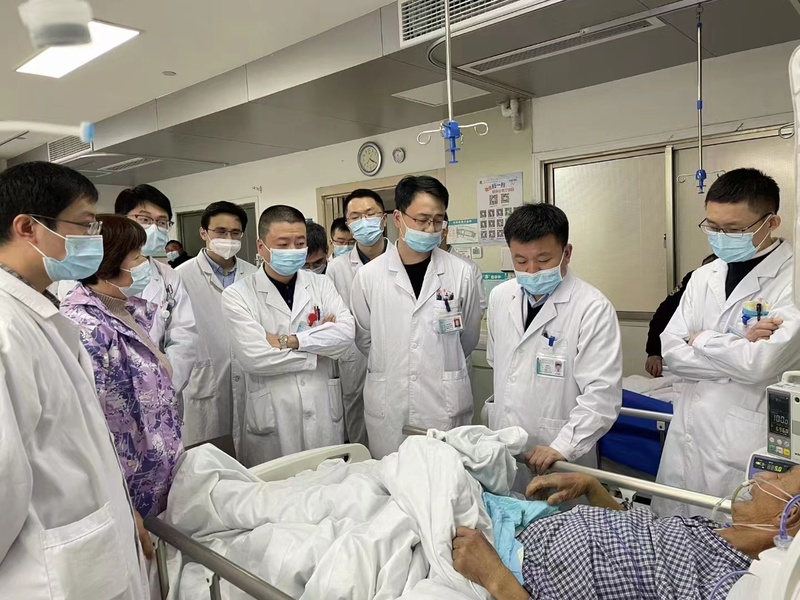
The atmosphere of the Spring Festival has not completely faded, and the work of the new year has begun in a busy schedule. Tao Guoquan has maintained a working state of "can’t stop" all the year round.
"Director Tao, an elderly and special patient with intestinal obstruction was transferred from Lianyungang in the emergency department. The examination found that there was intestinal volvulus adhesion. I had done several operations before, which was more complicated."
"Right away."
On the afternoon of Lunar New Year’s Day, Tao Guoquan, who had just returned home from hospital rounds, rushed back to the hospital. During the operation, it was found that some of the patient’s intestines had been necrotic and perforated. Fortunately, the timely treatment did not cause serious problems. Two hours after the operation, I observed the patient’s condition, and then it was already sunset when I came out of the hospital.
Gastrointestinal surgery has its particularity. The more holidays, the more patients with abdominal pain, perforation of digestive tract, appendicitis and obstruction caused by gastrointestinal tumors get together for treatment. "In addition to overeating during holidays, it is easy to cause gastrointestinal diseases. There are still many patients who work in other places on weekdays and have time to return to their hometown for treatment during holidays." Nearly 40 patients who have not been discharged from the two wards, more than 10 patients who have been admitted to the hospital, and outpatient clinics that have not stopped all day … These workloads are stacked together, so that the difference between holidays and working days can’t be seen. Every day, we still make early rounds and do emergency surgery until there is nothing to deal with. I don’t dare to feel at ease when I get home. I want to respond to the information about the patient’s diagnosis and treatment in a timely manner.
According to Director Tao Guoquan, with the change of people’s living habits, there are more and more patients with gastrointestinal tumors. In order to alleviate the discomfort of patients, the team has been working hard. Take cardiac cancer as an example, which is the most common site of gastric cancer in Huai ‘an and its surrounding areas. The gastric cardia extends downward from the tubular esophagus to the esophagogastric junction at the cystic gastric wall and connects with the esophagus upward. Smoking and drinking, infection with Helicobacter pylori, and stomach diseases that are not treated in time may all increase the probability of canceration. The treatment of cardiac cancer, whether radical proximal gastrectomy or radical total gastrectomy, will have a certain impact on the quality of life of patients. In 2022, Tao Guoquan’s team took the lead in completing total laparoscopic radical resection of proximal gastric cancer and mSOFY anastomosis of remnant stomach and esophagus in China. Compared with traditional surgery, this treatment scheme not only has obvious anti-reflux effect, but also has a lower incidence of anastomotic stenosis after operation, which can promote the recovery of nutritional status of patients with cardiac cancer after operation. "This is consistent with the team’s vision. We prefer to change from’ surgical resection scope and surgical skills’ to’ improving surgical safety and postoperative quality of life on the basis of radical treatment’."
In the new year, we should grasp the beginning and start. Tao Guoquan told reporters that in 2023, the department performed 2,836 operations, and the focus of this year’s efforts is still on refined technology. Gastrointestinal surgery is about to usher in the era of robots. It is necessary to share the technology of gastrointestinal surgery in Huai ‘an First People’s Hospital with the help of robotic surgery and live surgery at the same time, and continue to lead the team in the research of standardized tumor treatment. "As a doctor, the ultimate wish is that there is no disease in the world. I hope that people can improve their lifestyles, pay attention to gastrointestinal endoscopy, and intervene in the occurrence of tumors earlier."
Keywords: skill breakthrough
Huang Zhongwei, director of emergency medicine department of Nantong University Affiliated Hospital
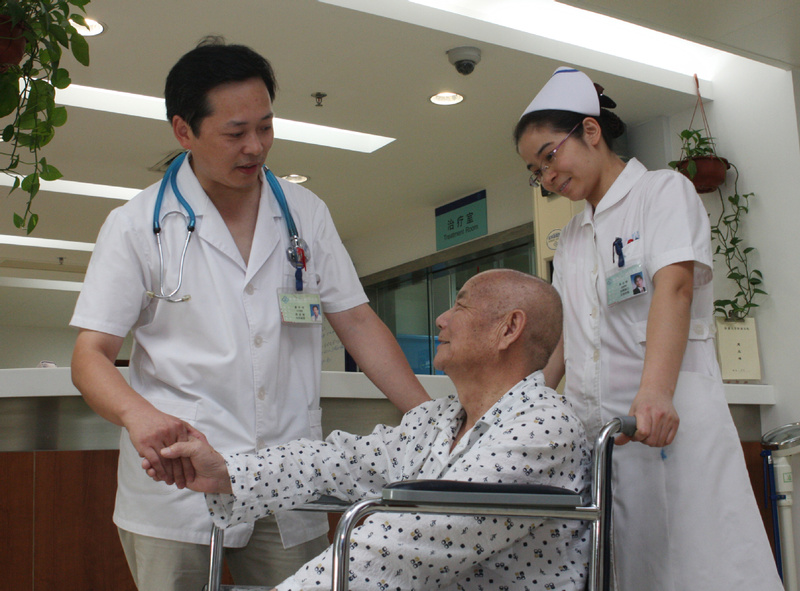
The most prominent thing in the emergency department is "urgency", "quickness" and "accuracy", which is urgent for patients, urgent for life, rapid diagnosis and accurate treatment. "Especially during the holidays, the outpatient clinic stopped and the number of emergency department visits doubled." Huang Zhongwei, director of the department, told the reporter that he was the director of the emergency department.22For years, every Spring Festival has been spent at work.
Fireworks are shining outside the hospital, families are reunited, and the emergency department is brightly lit and busy. "Last year, we had an average of every day.82A patient entered the emergency room. During the Chinese New Year in the Year of the Loong, it is on average every day.100Many people enter the emergency room. "Huang Zhongwei said.
The emergency department has a fast pace of work and can’t afford to delay a minute. Everyone should be highly concentrated. Sometimes I come home from the night shift, my body is exhausted, but my brain is still tense. Despite the hard work, Huang Zhongwei and his colleagues are full of enthusiasm: "Over the years, our emergency department has been working in three shifts. Whose turn is it to be on duty in the New Year? No one asks for leave. It can be said that none of our medical staff has completely taken the Spring Festival holiday. When they are not on duty, they will also keep the phone and keep an emergency state at any time. Seeing that every patient is out of danger under our rescue, we have a sense of accomplishment and our personal contribution becomes insignificant. "
"As the department with the most concentrated severe patients, the most diseases and the heaviest rescue and management tasks, the emergency department bears the important responsibility of protecting patients’ lives." Huang Zhongwei said that emergency patients are usually in an emergency and may face the test of life and death in just a few minutes. This is actually a test of the hospital’s ability and level of treatment. As the "forward position" of the hospital, it not only reflects the importance of accurate and timely diagnosis of patients’ illness by medical staff, but also ensures the smooth flow of emergency green channels only through efficient and orderly unity and cooperation.
Over the years, the hospital has groped to create a model of emergency substantive operation. After patients with chest pain and stroke are sent to the emergency department, there are a series of advanced rescue equipment and substantive wards. All critically ill patients complete the operation in the emergency area and complete the closed loop, which ensures the rapid treatment of patients and effectively shortens the time for patients to see a doctor. Emergency doctors have comprehensive knowledge reserves, excellent rescue skills, and are familiar with hemodynamic monitoring technology, ventilator use,ECMOTechnology, etc. When talking about the treatment of critically ill patients, Huang Zhongwei said: "We must achieve zero fault tolerance rate." Over the years, the emergency department has also been committed to training young doctors, encouraging them to constantly improve their professional skills and dare to break through and innovate.
2024In 2008, the new affiliated hospital of Nantong University will be opened soon, and Huang Zhongwei is also full of expectations. "The use of the new campus can make everyone truly improve the ability of the hospital to serve patients, especially the smart medical treatment and convenient transportation facilities, which will bring great convenience to the people." Huang Zhongwei said. After the opening of the new campus, the emergency department of the Affiliated Hospital of Nantong University, as an important regional emergency rescue center along the Yangtze River and coastal areas in Jiangsu Province, will also be expanded. The departments will respond to all kinds of peak visits in time, strengthen the team building of emergency classes and strong classes, continuously improve the medical quality and nursing level, and provide better medical services for patients.
Keywords:: tempering the critically ill team
Li Jiaqiong, Director of Department of Critical Care Medicine, Xuzhou Central Hospital
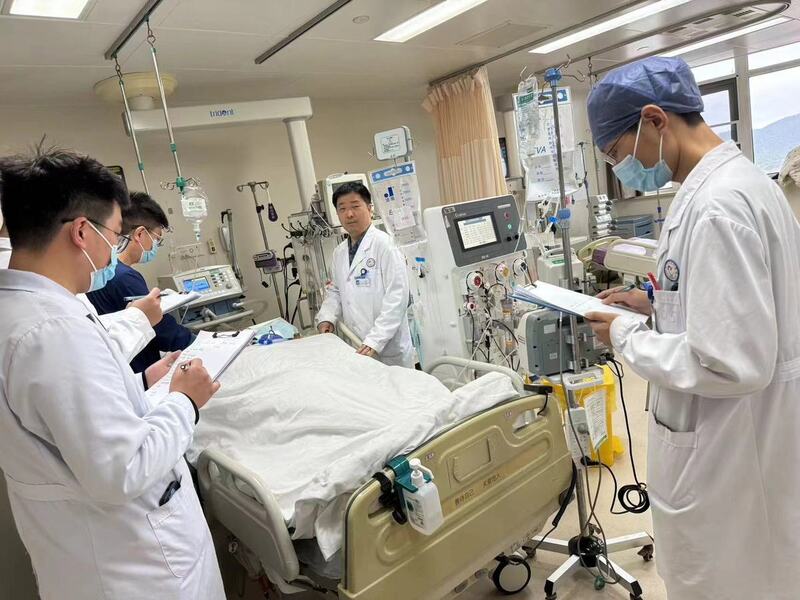
Xuzhou is a central city and a regional medical center in Huaihai Economic Zone approved by the central government. The medical services cover four provinces of Jiangsu, Shandong, Henan and Anhui, and there is a great demand for high-quality medical resources. The Department of Critical Care Medicine of Xuzhou Central Hospital has been running at full capacity. It is the sense of responsibility and mission of the department to "collect all the receivables and collect all the income".
During the Spring Festival, the Department of Critical Care Medicine of Xuzhou Central Hospital treated critically ill patients successively.154People, transfer out treatment159People and medical staff have little time to feel the festive holidays.
On the morning of new year’s daysevenJust after 8: 00, Li Jiaqiong, director of the first district of the hospital’s intensive care department, came to the intensive care unit early, first visited all beds, checked the condition of critically ill patients, and made a good handover with night shift colleagues. "Succession is a very meticulous work, which needs at least every day.2An hour. Every patient’s condition, early diagnosis and treatment process, yesterday24What special circumstances happened to the patient within hours … These should be clearly understood during the handover. "
Most of the patients who stayed in the intensive care unit for treatment during the New Year were extremely critically ill. They often need to rely on ventilators, bedside blood purification, intra-aortic balloon counterpulsation (IABP), even extracorporeal membrane oxygenation (ECMO) and other equipment to maintain life, "we must always be by the patient’s side, and we must not slack off." Li Jiaqiong said that there was a heavy snow in Xuzhou years ago, and the temperature plummeted, which led to a high incidence of respiratory diseases and a sudden increase in severe cases of cardiovascular and cerebrovascular diseases. At the same time, the number of traffic accidents increased during the Spring Festival, which means that Kobe Bryant in critical care medicine usually has to bear more busyness and responsibility.
The medical staff here24Hours are a tense rhythm, and we must constantly patrol the ward, keep an eye on the monitoring equipment, evaluate the condition, handle the doctor’s advice, and implement various rescue operations. Li Jiaqiong said: "The medical care in the intensive care department has hardly had a complete Spring Festival holiday, and it is impossible to realize the wish of going home for a complete year."
Youwei76A-year-old car accident trauma patient was brought to the hospital with cerebral hemorrhage complicated with chest injury, lung injury, kidney injury and hemorrhagic shock. After entering the intensive care unit, the medical staff immediately took emergency tracheal intubation and deep vein catheterization to stabilize the circulation of large-scale blood transfusion. But after two days, the patient’s condition continued to worsen. Li Jiaqiong decided to give the patient prone position ventilation treatment immediately, and continued to give the patient every day.16After more than hours of prone ventilation and repeated bronchoalveolar lavage, the patient’s oxygenation has finally been significantly improved, and he is now actively recovering.
"The patient’s condition here is changing rapidly. We need to monitor the patient’s blood pressure, heart rate, breathing and blood oxygen in real time. Once there is an emergency, we are ready to rescue at any time, such as catheterization of deep veins and arteries and continuous bedside blood purification (CRRT), ice blanket application, vibration expectoration, bedside perfusion, urine dynamic monitoring, cardiac function monitoring, etc. Li Jiaqiong said that during the Spring Festival holiday, all the instruments were working all the time. It is normal for everyone to be busy in the morning and have lunch at two or three in the afternoon. "The Department of Critical Care Medicine is a professional ward for centralized monitoring and treatment of critically ill patients in hospitals. As the last line of defense to save lives, medical care needs to be kept by patients at all times. Even if you go home from work, all the staff should24When you are on duty, you are always on call. "
Li Jiaqiong said that when the Year of the Loong arrived, everyone was full of expectation and confidence. The future medical focus of the Department of Critical Care Medicine, first, strengthen the competency of critical care medicine and build a regular special force in all directions; Second, further optimize the specialist process, strengthen norms and optimize treatment; Third, develop new technologies, such as multi-modal monitoring of nerve function, monitoring of diaphragm function, protection and rehabilitation, invasive and non-invasive combined hemodynamic monitoring and support, and optimize them at the same time.ICUHumanities construction, continue to strengthen exchanges and cooperation at home and abroad, complete related domestic and international collaborative projects and clinical research on severe neurology, severe respiration, severe circulation, severe infection, severe nutrition and rehabilitation, especially the early development of brain function monitoring in our hospital. At the same time, the optimized combination of blood purification and mechanical ventilation technology of respiratory failure are advanced in the province, and the integration of medical teaching and research creates a solid platform for severe medicine to serve the people’s health in the whole hospital and even Huaihai Economic Zone.
Keywords: "intelligent" medical services
Ye Hong, Deputy Director of Kidney Disease Center of the Second Affiliated Hospital of Nanjing Medical University
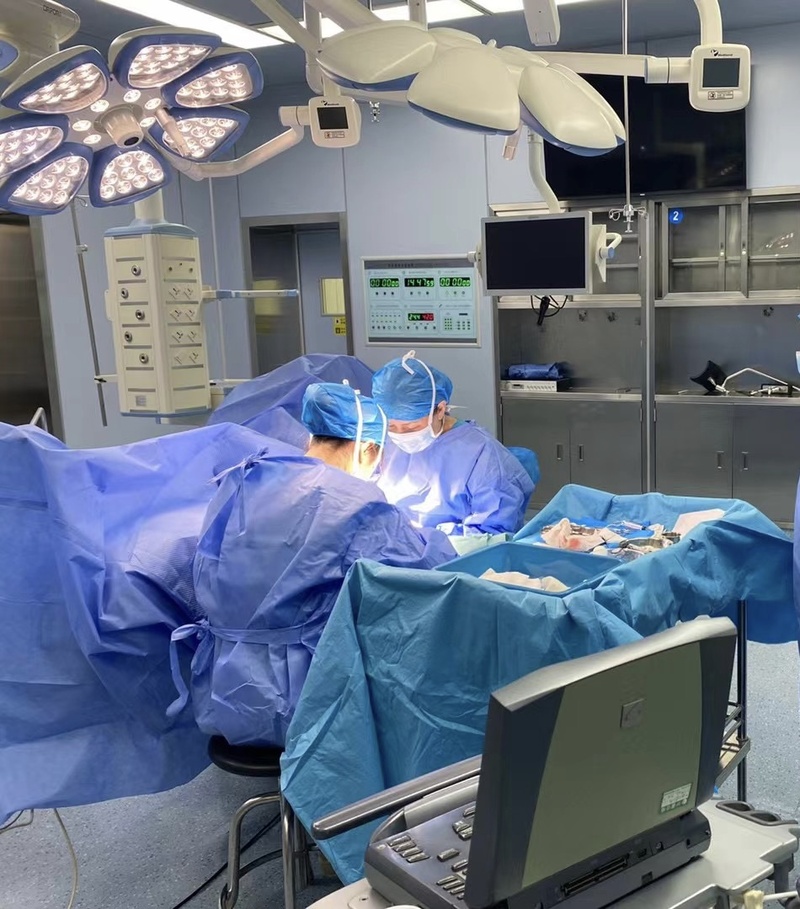
On the ninth day of the Lunar New Year, when most people returned to work, the medical staff of the blood purification center of the Second Affiliated Hospital of Nanjing Medical University finally ushered in the first rest day of the Spring Festival holiday. In the two hemodialysis centers, Maigaoqiao Campus and Sajiawan Campus, only engineers are buzzing in disinfection and maintenance of hemodialysis equipment.
3671Dialysis, this is the data from New Year’s Eve to the eighth day of the first month, which means that there arefour hundredThe rest of the patients are on dialysis, and the "work density" of medical staff can be imagined by simple conversion. Ye Hong, deputy director of the Hospital Nephrology Center, said that this is only a routine hemodialysis work. During festivals, patients often have operations that require hemodialysis access due to blood vessel blockage. The emergency department has opened a green channel for patients to ensure that patients can operate quickly and can be dialyzed normally after surgery or transferred back to local treatment. The holiday lasted several days.97The operation was almost the same as usual. On New Year’s Eve, Ye Hong also performed vascular access surgery for a patient transferred from other places. Because of the complicated vascular situation, she did it all morning.
In order to ensure the treatment of critically ill hemodialysis patients, the center also has10Bed-bedKICUIntensive care unit During the Spring Festival, the operation was basically kept at full capacity, with average daily treatment and rescue.fourMore than cases of patients, rescue success rate reached.95%Above. Ye Hong recalled that on the sixth day of the Lunar New Year,KICUUpon receiving urgent information, a regular dialysis patient suddenly fell into a coma at home, and was admitted to the hospital by ambulance. After tracheal intubation, mechanical ventilation was assisted by ventilator.CRRTAnd anti-infection treatment, the patient’s condition has improved and his vital signs are normal at present.
"Although it is a holiday, the degree of hard work is no less than in the past." Because dialysis patients have to go through the steps of "condition evaluation-orderly access to the machine-close monitoring during dialysis-smooth and safe access to the machine" every time they have dialysis, nurses undertake more arduous nursing work. On New Year’s Eve, many patients who were scheduled to come in the afternoon suggested that they wanted to finish dialysis early and go home to prepare for the New Year’s Eve, so the medical staff put the patients on the computer one hour earlier than usual. "For the sake of morning.half past sixLet the patients get on the computer on time. I saw that many nurses got up in the morning.fourA little more. Ye Hong noticed that the nurses were more careful about the patients’ care, and worried about the sudden problems such as hyperkalemia and heart failure caused by eating too much at dinner, so the nurses gave dietary guidance to the patients over and over again.
We can’t stop working and guarding patients, but festivals still bring some different colors to the hemodialysis center. The blessings and window grilles that can be seen everywhere on the glass wall, and the chocolates and sweets that the nurses "stuffed" from their families all made the medical staff "warm" in their hearts. "A patient with the longest dialysis time in our center has already had it.39Years old, dialysistwentyPatients over years old also have nearly80People, getting along for a long time makes these patients especially understand the hard work of medical staff. "Her eyes were full of thanks.
"Go to the old Gaoqiao campus blood purification center officially opened, added.88Taiwan automatic central dialysis system has been greatly improved in hardware. This year, the focus of our work is on software systems. Ye Hong said that a set of digital information system will be added in the later stage, which can help them identify and screen the examination results of patients in time, and also do a good job in the management of key patients, helping the diagnosis and management to be more intelligent and digital.
It is too late to say more, and it is a new working day. Ye Hong is in a hurry: "There are still many patients waiting in the clinic, so I will go to work first!"
Keywords: the project continues to be "innovative"
Ming Chen, Director of Clinical Laboratory of Taixing People’s Hospital.
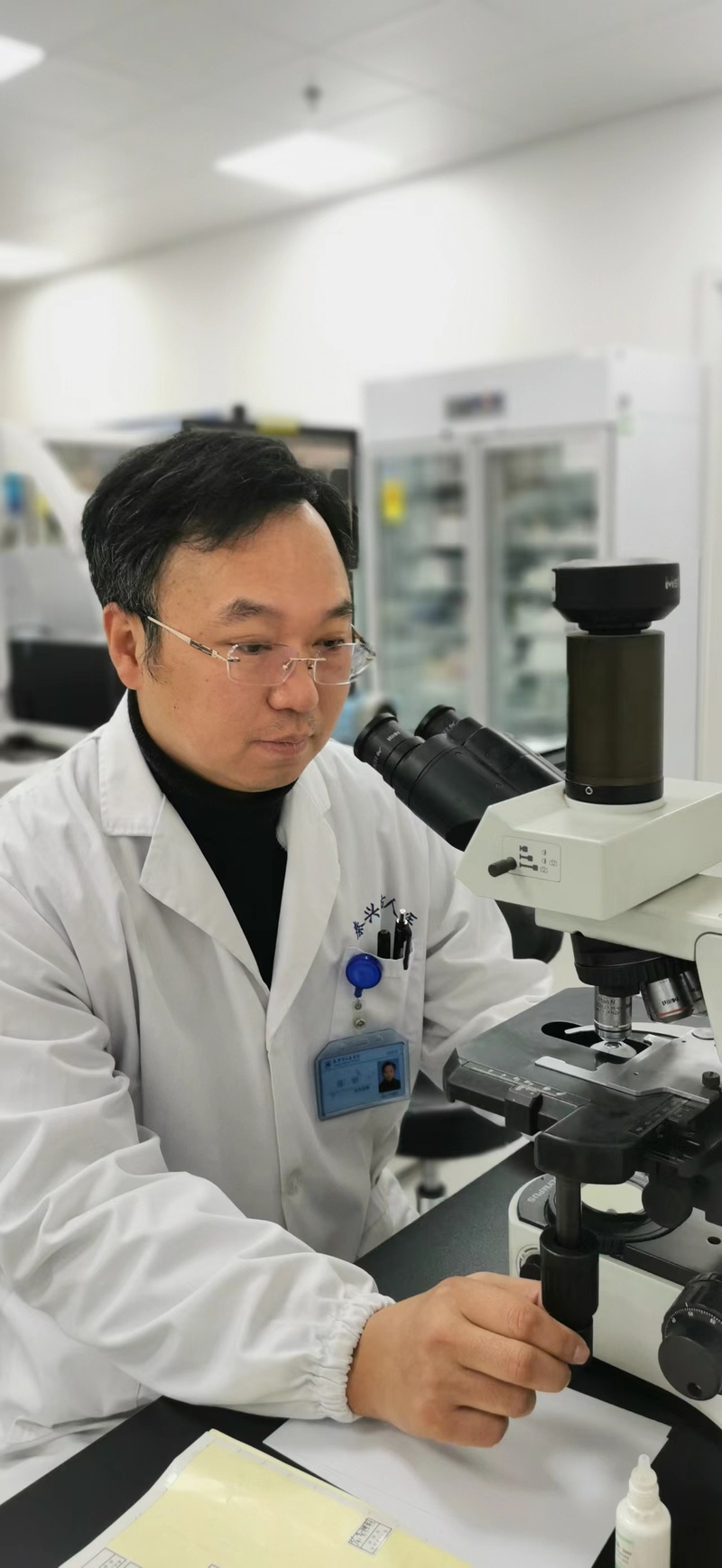
The new year just started, and Ming Chen, director of the laboratory department, made a long list of "task lists" for the department. As the laboratory department of a county-level 3A hospital, the inspection items should continue to be "innovative", and we should continue to maintain full marks in inspection quality management!
"Judging from our work this year, the number of inspections from the 30 th to the second day of the year is slightly less. Since the fifth day of the year, it has been busier than usual, and it has already entered the rhythm of normal work." Ming Chen told reporters that among many departments in the hospital, the clinical laboratory is relatively special, and they don’t have long-term contact with patients, but the collection of biological samples again and again and the issuance of accurate results are all providing basis for the diagnosis and treatment of patients.
Ming Chen told reporters that during the Spring Festival this year, the demand for inspection and examination of inpatients and emergency patients has not diminished, and so has the laboratory.24Hours on the job, work is not easier than usual. During the Chinese New Year, there are hospitalized patients with routine blood tests, "biochemistry"1+4",myocardial enzyme spectrum, blood coagulation function and other necessary daily inspection items continue. The hospital opened the clinic on the second day of this year, and the physical examination center went to work normally on the third day of this year. In recent years, many returning citizens will also arrange medical treatment and examination during the Spring Festival, which also increases the workload of the Spring Festival holiday inspection. The emergency situation is more and more urgent: there are many dinners during the Spring Festival, and some people go to the emergency department after eating and drinking. If there is acute pancreatitis and severe chyluria, the doctor on duty needs to centrifuge the patient’s samples repeatedly with a high-speed centrifuge until the samples can be detected; Fever, acute abdomen, trauma, cardiovascular and cerebrovascular diseases … The high incidence of emergency diseases during the Spring Festival holiday can not be separated from inspection. During the Spring Festival, the hospital still has every day.4000For the inspection of multi-person samples, the inspection doctors take turns to take vacations, and each person can only rest.2God.
There are not many thrilling rescue stories in the clinical laboratory. They are faced with more specimens, instruments and inspection needs. The key words belonging to the clinical laboratory are "accuracy" and "timeliness": staff.24Hours on the job in place, to ensure that all the performance of the inspection instrument is in good condition, to ensure that the inspection reagent is sufficient; During the holidays, the system of examining and signing inspection reports is also strictly implemented to ensure good quality; When the "critical value" of the test is encountered, the system will automatically remind you. After the laboratory confirms it, it will inform the clinician in time to win time for the emergency rescue of critically ill patients …
Ming Chen told reporters that the Spring Festival is daily.4000Many times of inspection also include biological samples sent from other hospitals. Taixing People’s Hospital is a third-class hospital at the county and municipal level. The laboratory department of the hospital is a key specialty in Taizhou and a qualified unit in the construction and management of the laboratory department of hospitals in Jiangsu Province, and carries out inspection projects.500A number of comprehensive, some relatively new bacteria and hormone mass spectrometry inspection projects can also be carried out, and the inspection force is in a leading position around, so it also undertakes the inspection and assistance work for all township hospitals and other hospitals in Taixing City. For the inspection items that cannot be carried out around, samples will be sent to Taixing People’s Hospital for inspection. This part of the tasks and holidays are also "no discount" in terms of quality and quantity.
Clinical laboratory is one of the basic departments in the hospital to carry out daily work, and it is also the hub for the coordinated operation of various departments. After the Spring Festival, the demand for medical treatment will be released, and the number of patients will reach a small peak. Ming Chen said that the clinical laboratory has also straightened out the process and made preparations to provide patients with better and more efficient services while ensuring the completeness, accuracy, honesty and credibility of each report.
2024In, the department’s "new task list" has already been listed:2024In, the clinical laboratory plans to introduce gene sequencing technology for rapid diagnosis of tumors and microorganisms, and carry out new technical projects such as molecular diagnosis of individualized treatment of tumors, detection of various viruses and pathogens, and non-invasive prenatal diagnosis.10-20Items, so that the surrounding residents can complete the relevant tests nearby, saving diagnosis time. In terms of inspection quality management,2024In, the laboratory of Taixing People’s Hospital will strive to keep full marks in the performance appraisal of national tertiary hospitals, and the participation rate and qualification rate of ventricular interstitial assessment will reach 100%.
Xinhua Daily Meeting Point reporter Ying An Wang Tian Yang Yan Jiang Mingrui Zhong Chongshan